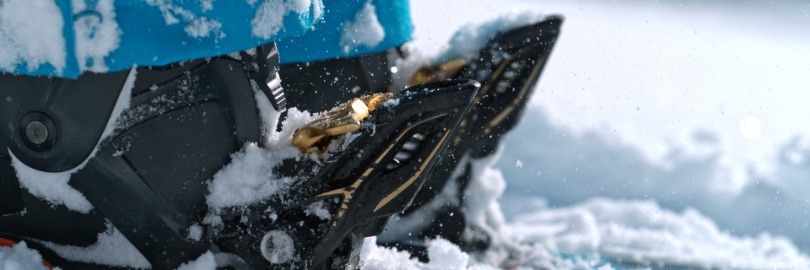Choosing the Right Alpine Ski Bindings
Nov 11th 2025

Yay, new skis! Nothing beats the excitement of fresh gear—until someone asks, “What bindings are you putting on them?” Don’t panic. We’ve got you. Ski bindings might be the most overlooked part of a setup, but they play a major role in how your skis perform—and how well they protect you. Here’s what you need to know before you click in.
New or Old Bindings?
We get this question a lot: “Can I use my old bindings?”
Short answer—probably not. Most skiers replace their skis every seven years or so, and by then, those bindings are usually past their prime. Safety standards evolve, parts wear out, and even small changes in ski width can make old bindings a poor fit. Plus, some older systems are integrated right into the ski and can’t be remounted. Treat yourself to a fresh pair—your knees (and your ski tech) will thank you.
Which Bindings Are Safest?
Here’s the truth: no binding can guarantee injury prevention. But there are options that can help. The Tyrolia Protector SLR and Knee Binding both feature lateral heel release systems that have been shown to reduce the risk of ACL injuries in certain falls. If ACL protection is a concern, it’s worth the upgrade.
What’s the Difference Between Binding Models?
Bindings may look similar, but subtle design details can change your experience on the snow. Let’s break down a few that matter most.
Elastic Travel
Think of this as your wiggle room. It’s how far your boot can move in the binding before the binding releases. More elastic travel = fewer annoying pre-releases, especially if you ski bumps, variable snow, or just ski hard. The Look Pivot is legendary here—tons of travel, tons of confidence.
Vertical vs. Horizontal Springs
Modern skis are wider, so the binding toe pieces evolved. Horizontal springs offer better power transfer to wide skis, while vertical springs—like those in the Salomon Strive—give a smoother, more natural snow feel. The right choice depends on how and what you ski.
Binding Weight
Here’s where women really feel the difference. A lighter binding means less fatigue (and fewer awkward parking lot carries). We love the Marker Squire for everyday resort skiing—it’s light, reliable, and easy to click into. If you ski aggressively or ride a wider platform, try the Tyrolia Attack LYT—more metal, more control.
Ramp Angle (a.k.a. Binding Delta)
Tiny details make a big difference. The ramp angle—how much higher your heel sits than your toe—affects your stance, balance, and overall feel. Most women prefer a modest 3–4mm ramp. We can help you fine-tune this during a stance assessment so you get the perfect position for power, comfort, and control.
The Bottom Line
Bindings aren’t the flashiest part of your setup, but they are one of the most important for performance and safety. Our team carefully curates every binding we sell, balancing weight, safety, and feel so you can ski your best. Not sure which one’s right for you? Stop by, call, or DM us—we’ll help you find your perfect match.